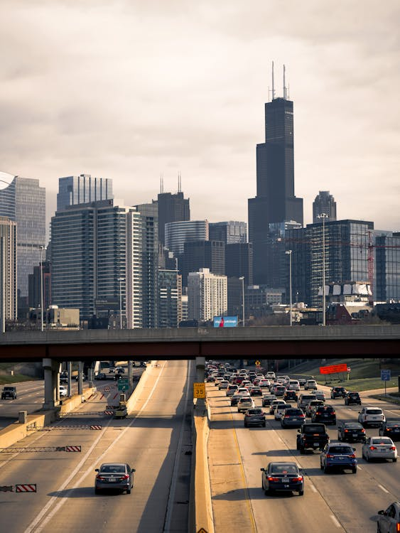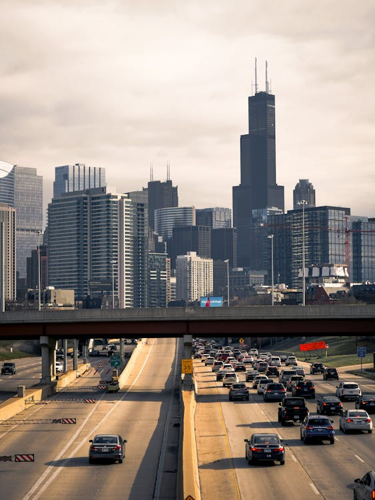Traffic reports are vital for ensuring smooth commutes and offering essential information about road conditions, accidents, construction zones, and more. The blend of innovative technology and real-time updates has made these reports more precise than ever. By keeping drivers informed, these reports help commuters avoid delays and navigate more efficiently. But how do news stations collect all the necessary data to provide timely and accurate updates?
Like many major cities, Chicago is equipped with a network of resources that combine smart infrastructure and real-time data to ensure the accuracy of its traffic reports. Traffic cameras and sensors placed at key intersections and highways deliver live feeds that show real-time traffic conditions, while the sensors monitor vehicle speeds and traffic flow. News stations tap into these feeds to gather precise, visual information about current traffic states on major roads.
News stations also rely on collaborations with local traffic management centers and government agencies such as the Illinois Department of Transportation (IDOT) and the Office of Emergency Management and Communications of Chicago (OEMC). These centers oversee traffic across the city and provide direct updates on incidents, road closures, and construction. Digital resources like county websites and police scanners are also invaluable tools in the traffic report industry. By partnering with these organizations, news stations can provide the public with accurate, up-to-the-minute information as events unfold.
Another key source of traffic information is GPS tracking data. Many vehicles, including public transportation and commercial vehicles, are equipped with GPS systems that transmit location and speed data. This helps news stations track traffic patterns, identify slowdowns, and pinpoint accidents or hazards on the roads.
“For critical high-volume routes (like expressways),” says Kermit Wies of the Chicago Metropolitan Agency for Planning, “traffic managers will use Intelligent Transportation Systems (ITS) such as in-road sensors and cameras to make real-time decisions to close ramps and upstream lanes, issue signboard messages or media blasts in an effort to keep delays to a minimum.”
For significant traffic events or heavy congestion, some news stations use aerial surveillance to provide helicopter views of the situation. These aerial teams assess the extent of traffic disruptions and relay the information back to the studio promptly.
Susan Berkes, traffic reporter for “traffic on the 8s” at WBBM 780AM, uses the compiled data "to recommend alternate routes for drivers, prioritizing solutions over merely pointing out the problems." Crowdsourced insights from real-time tipsters also play a role in her reports. Berkes receives updates through WBBM’s Traffic Tip Line, where drivers can report incidents and accidents as they happen. "I rely on all my sources to ensure the most accurate report for our listeners," Berkes explains.
Once the data is collected, news stations utilize specialized software platforms to analyze and compile it into traffic reports. Automated systems integrate all the data to create live traffic maps and updates. Anchors or reporters then present this compiled information through broadcasts, either on air or via digital platforms, ensuring the public receives timely and accurate road condition updates. "Producing traffic reports every eight minutes is a challenge, and my producer plays an essential role in helping sift through all the information, particularly during the busiest a.m. and p.m. drive times," Berkes states.
With the integration of real-time data, cutting-edge technology, and cloud-based solutions, traffic reports have become an indispensable tool for navigating city roads. From cameras and sensors to GPS and social media, news stations gather information from various sources to provide up-to-the-minute updates. Understanding the process behind these reports sheds light on the level of detail and effort required to keep the public informed, ultimately ensuring smoother commutes for everyone.








(0) comments
Welcome to the discussion.
Log In
Keep it Clean. Please avoid obscene, vulgar, lewd, racist or sexually-oriented language.
PLEASE TURN OFF YOUR CAPS LOCK.
Don't Threaten. Threats of harming another person will not be tolerated.
Be Truthful. Don't knowingly lie about anyone or anything.
Be Nice. No racism, sexism or any sort of -ism that is degrading to another person.
Be Proactive. Use the 'Report' link on each comment to let us know of abusive posts.
Share with Us. We'd love to hear eyewitness accounts, the history behind an article.